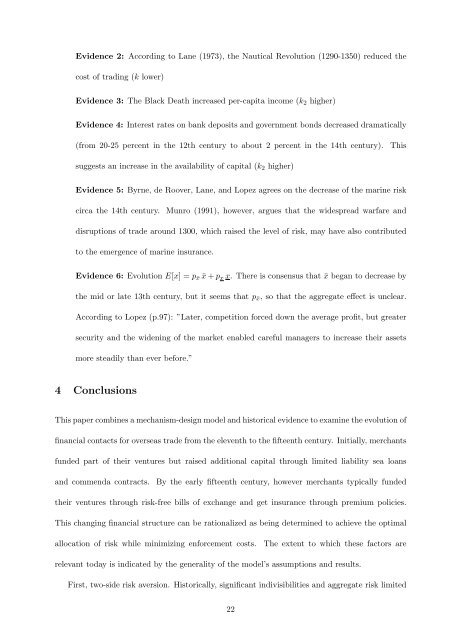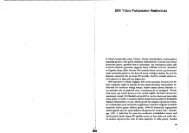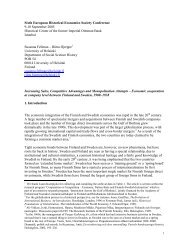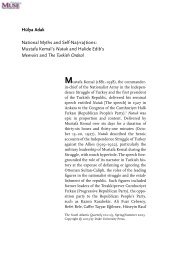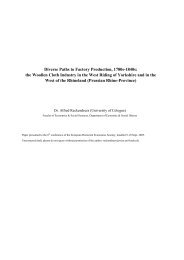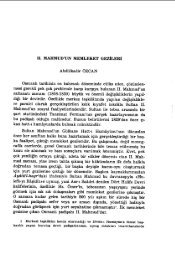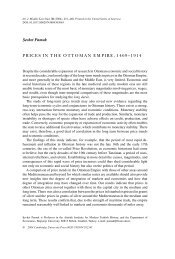The Birth of Insurance Contracts - The Ataturk Institute for Modern ...
The Birth of Insurance Contracts - The Ataturk Institute for Modern ...
The Birth of Insurance Contracts - The Ataturk Institute for Modern ...
You also want an ePaper? Increase the reach of your titles
YUMPU automatically turns print PDFs into web optimized ePapers that Google loves.
Evidence 2: According to Lane (1973), the Nautical Revolution (1290-1350) reduced the<br />
cost <strong>of</strong> trading (k lower)<br />
Evidence 3: <strong>The</strong> Black Death increased per-capita income (k2 higher)<br />
Evidence 4: Interest rates on bank deposits and government bonds decreased dramatically<br />
(from 20-25 percent in the 12th century to about 2 percent in the 14th century). This<br />
suggests an increase in the availability <strong>of</strong> capital (k2 higher)<br />
Evidence 5: Byrne, de Roover, Lane, and Lopez agrees on the decrease <strong>of</strong> the marine risk<br />
circa the 14th century. Munro (1991), however, argues that the widespread warfare and<br />
disruptions <strong>of</strong> trade around 1300, which raised the level <strong>of</strong> risk, may have also contributed<br />
to the emergence <strong>of</strong> marine insurance.<br />
Evidence 6: Evolution E[x] = p¯x ¯x + px x. <strong>The</strong>re is consensus that ¯x began to decrease by<br />
the mid or late 13th century, but it seems that p¯x, so that the aggregate effect is unclear.<br />
According to Lopez (p.97): ”Later, competition <strong>for</strong>ced down the average pr<strong>of</strong>it, but greater<br />
security and the widening <strong>of</strong> the market enabled careful managers to increase their assets<br />
more steadily than ever be<strong>for</strong>e.”<br />
4 Conclusions<br />
This paper combines a mechanism-design model and historical evidence to examine the evolution <strong>of</strong><br />
financial contacts <strong>for</strong> overseas trade from the eleventh to the fifteenth century. Initially, merchants<br />
funded part <strong>of</strong> their ventures but raised additional capital through limited liability sea loans<br />
and commenda contracts. By the early fifteenth century, however merchants typically funded<br />
their ventures through risk-free bills <strong>of</strong> exchange and get insurance through premium policies.<br />
This changing financial structure can be rationalized as being determined to achieve the optimal<br />
allocation <strong>of</strong> risk while minimizing en<strong>for</strong>cement costs. <strong>The</strong> extent to which these factors are<br />
relevant today is indicated by the generality <strong>of</strong> the model’s assumptions and results.<br />
First, two-side risk aversion. Historically, significant indivisibilities and aggregate risk limited<br />
22


